Cat Abscess Treatment - What to Expect

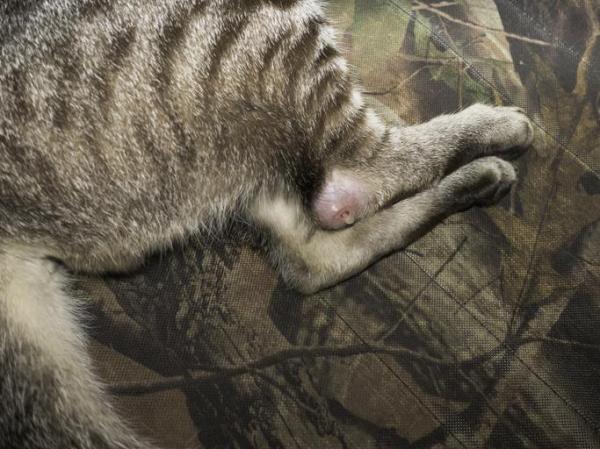

See files for Cats
When we think of an abscess, it is common for many to first think of a dental problem. If a cat tooth abscess occurs, it might be difficult to tell until the symptoms become acute. But a cat can get an abscess in various places, including their, neck, head, tail or anywhere fluid can accumulate. These external abscesses may be easier to spot, but you will still need to keep an eye out for them since they may be hidden by the cat's fur. Once discovered, many cat guardians will want to know about cat abscess treatment. Will they be able to treat a cat's abscess at home? What can you expect in terms of cat abscess healing time?
AnimalWised answers these questions and more as we look at abscesses in cats. Before we do, we must stress how important it is to take your cat to the vet if you spot an abscess to achieve a proper diagnosis.
What is a cat abscess?
An abscess is one of the most common skin problems in cats. They are characterized as a collection of pus which collects in the tissue of the body. This leads to a swelling of this tissue, often manifesting in a raised bump which will usually disappear once the pus is drained. Pus is produced as a byproduct of the body's immune system fighting off an infection. However, if it isn't able to leave through the skin, it can build up and cause redness and swelling. The basic visual characteristics are:
- Swelling of the skin in the form of various sized bulges.
- The presence of infection causing pus to be exuded.
- Pain and, sometimes, heat in the abscess site.
- The rest of the symptoms will depend on the location of the abscess, examples of which we will see in the sections below.
There are reasons other than abscesses why a cat might have lumps on their body. Some of them may be benign, others more concerning. It will take a physical examination and proper assessment of concurrent symptoms (as well as possible diagnostic tests) to work out the cause. Taking your cat to the veterinarian is imperative if you want to reach an accurate diagnosis. If you decide to treat a cat abscess at home, but the cat doesn't actually have an abscess, you could either be doing more harm or neglecting another medical condition which needs serious treatment.
Cat tooth abscess
A tooth or dental abscess in cats is one of the most common types, especially of those which appear in the mouth. As a tooth abscess in cats occurs in the mouth, you may not be aware there is a problem until the symptoms become more acute. We don't always look directly into our cat's mouth and, if we do, we might need to take a very close look to see a dental abscess.
Cats can make vocalizations, but their communication with us takes many forms. If your cat has a tooth abscess, we may need to look at other symptoms. These may include:
- Eating with difficulty
- Stops eating completely
- Nose bleeds
- Blood from their mouth
- Meowing in attempt to get your attention a lot
- Rubbing their face against things to relieve pressure
- Pawing at their mouth
- Weight Loss
- Bad breath
- Swelling on their cheek
- Tiredness
In acute cases, the abscess can grow to the point it emerges from the mucosa of the gums and extends out the cheek. It can even reach the eye and provide serious complications to the cat's health. This would only happen if the early symptoms are ignored, so it is important that dental abscesses in cats are treated by a vet as soon as possible.
There are other things which will cause inflammation in a cat's mouth, including periodontal problems which is “an essentially irreversible and progressive condition”[1]. However, an abscess caused by more common tooth decay or bacterial infection should not return if the problem is adequately treated.
Treatment of a cat tooth abscess may require extraction. If this is the case, it is not advised to try to replace the tooth with cosmetic teeth. While some veterinary dentists may offer this service, an article in the Journal of the American Veterinary Medical Association argues this is a procedure which cruel and unnecessary for the cat's health[2].
Cat anal gland abscess
Also known as a perianal abscess, a cat anal gland abscess can be very uncomfortable for the feline. Anal glands are used to help with defecation and also provides a unique smell which can be used to identify an individual feline. If the anal gland becomes impacted, the fluid cannot be expressed and it will build up. This will require the glands to be expressed manually.
If the anal gland becomes infected, the pus will build up and an abscess can form. This cannot be expressed in the same way as it may cause tissue damage. A perianal abscess will present in:
- Reddened skin
- Foul odor
- Inflammation
- Open wound
- Presence of pus
If the abscess is not properly treated, it can result in a fistula. This is a channel whereby the pus can escape to the outside, but does not go away. Treatment will involve antibiotics and hygienic maintenance of the area. There is anecdotal evidence to suggest there are predisposing factors to developing perianal abscess or fistula, such as obesity, diabetes mellitus, Crohn's disease and hypertension. However, reports suggest “there is no correlation between anal sac's size and an animal's weight or age, either for normal or diseased conditions”[3].
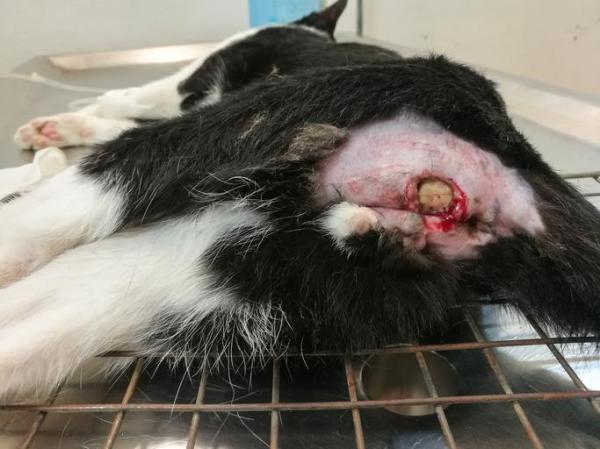
Abscesses in cats due to injury
As an abscess often forms as the result of a bacterial infection, there are many ways this bacteria can enter a wound site. If the cat suffers an injury, then bacteria might get into the wound through various means. If they injure themselves on sharp material which has bacteria on it, or if there come into contact with bacteria after receiving the wound, then it can lead to an abscess.
When two cats fight, a similar situation may occur. When cats scratch or bite each other, they may have bacteria on their claws or nails. This can get into the wound and lead to infection. If the skin heals over the wound, but the wound has not been cleaned properly, the bacteria can remain inside, even if it looks externally healed. The result is an abscess which builds up inside. They can be very painful and provide various complications depending on the location of the abscess.
Treatment will be the same as other types of abscesses, i.e. disinfection and/or antibiotics. However, they may also need to be drained, depending on the amount of accumulation and location of the abscess.To prevent injury from a cat fight, especially with male cats, you should have them neutered. This will also reduce other behavioral and health problems.
Management of abscesses in cats
In the previous sections we have discusses the causes, symptoms and treatment of abscesses in cats. Here we go into more detail about the general management of said abscesses:
- It is important to identify the cause of the infection, if possible. It may sometimes be cause by a foreign body entering under the skin such as a thorn or metal spike. If this is the case, the object may need to be removed surgically, especially if the skin has grown over it.
- The cat will likely be prescribed antibiotics to eliminate the infection which caused the pus build up. As cats can have trouble swallowing pills, specifically for dental abscesses, antibiotics may be administered by injection.
- After emptying the pus as much as possible, the vet will disinfect the wound site with a product such as chlorhexidine.
- In the most acute and serious cases of abscesses in cats, the veterinarian will make a small incision in which they can insert a drain. This is usually a tube for the liquid to come out, although many might drain it directly into a suitable receptacle.
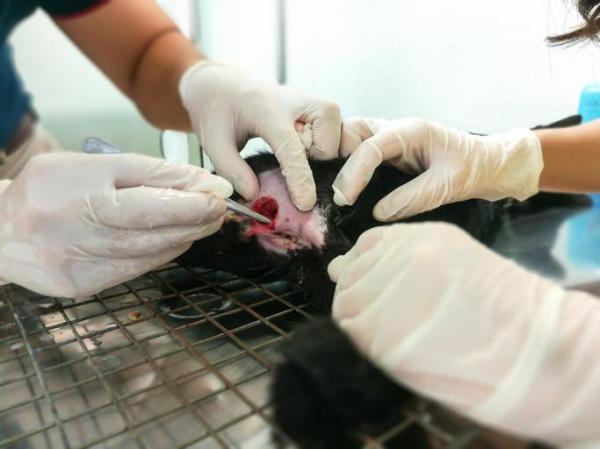
Will an abscess heal on its own?
The healing of an abscess will depend greatly on how acute is the infection. If there is a lot of pus, it means the abscess is trapped and unable to drain naturally. It also means the infection might be aggressive or not getting any better. We shouldn't let an abscess get so big that it becomes problematic and potentially dangerous to the cat's health.
However, smaller abscesses might occur on our cat's skin which will go away of their own accord. In these cases, they may look little more than a raised pimple or spot. If we see small abscesses like this, we should monitor them carefully. If they do not go away, it is possible they may not be an abscess at all and we will need to get them checked out by the vet.
Can you treat cat abscesses at home?
As we said, the problem lies with the extent of the abscess. You can wash the site of the abscess and monitor it for changes, but we do not recommend you treat them yourself. Home remedies for abscesses in cats can do more harm than good. If you try to drain the abscess yourself, then you could end up making the incision too big or do it in the wrong place. If you do this, you could cause serious scarring. You may also introduce more bacteria which can create an even worse infection.
You will also not be able to determine if the cat needs antibiotics, nor could you prescribe them if they do. Taking them to the vet means other medical conditions can be ruled out and the correct treatment plan given.
Video of cat abscess draining
In the following video, you can see for yourself the importance of taking your cat to a specialist for draining. They not only have the knowledge and tools to administer to the problem, they have the expertise to know what to do if something goes wrong.
Please be warned, the following video contains graphic content which some viewers may find disturbing:

This article is purely informative. AnimalWised does not have the authority to prescribe any veterinary treatment or create a diagnosis. We invite you to take your pet to the veterinarian if they are suffering from any condition or pain.
If you want to read similar articles to Cat Abscess Treatment - What to Expect, we recommend you visit our Skin problems category.
1. Perry, R., & Tutt, C. (2014). Periodontal Disease in Cats: Back to Basics - With an Eye on the Future. Journal of Feline Medicine and Surgery, 17:1, 45-65.
https://journals.sagepub.com/doi/abs/10.1177/1098612X14560099
2. Tannenbaum, J., et al. (2013). The Case Against the Use of Dental Implants in Dogs and Cats. Journal of the American Veterinary Medical Association, 243:12, 1680-1685
https://www.researchgate.net/publication/259152605_The_case_against_the_use_of_dental_implants_in_dogs_and_cats
3. Jung, Y., et al. (2016). Diagnostic Imaging Features of Normal Anal Sacs in Dogs and Cats. Journal of Veterinary Science, 17:3, 331-335.
https://www.ncbi.nlm.nih.gov/pmc/articles/PMC5037300/

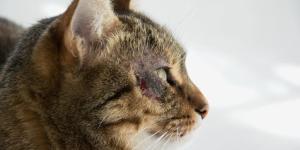

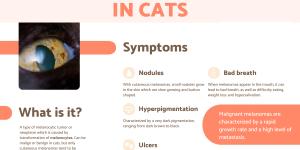
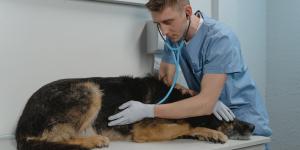

 Why the back keg pink and open
Why the back keg pink and open


